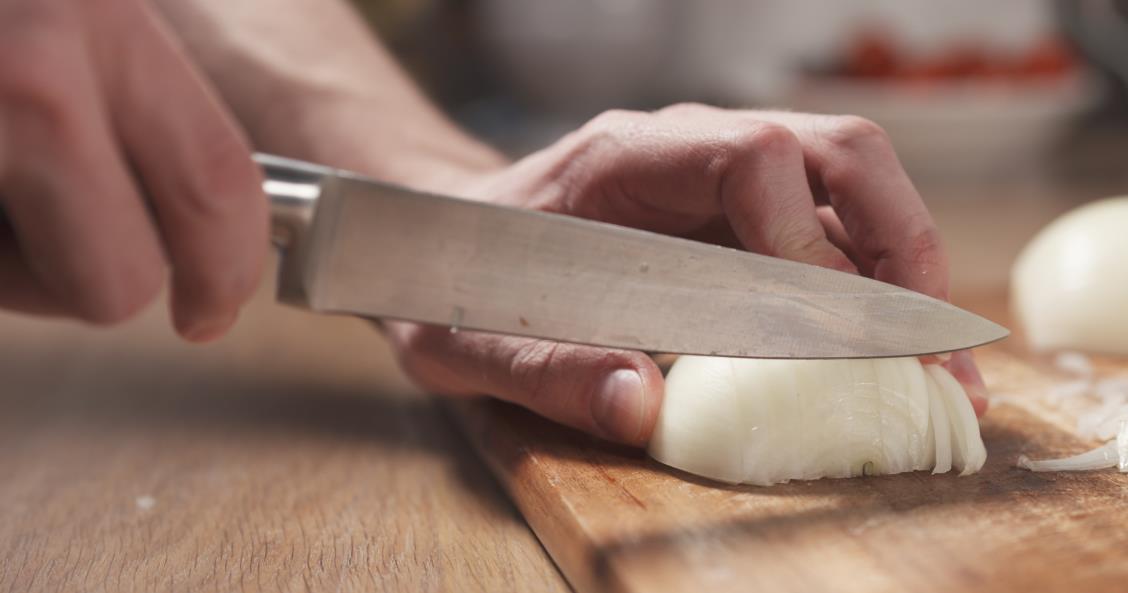The Japanese have given the world many splendid things and one thing they do very well is steel production. This article examines a leader in the high carbon stainless steel market, ATS 34 steel manufactured by the Japanese firm Hitachi.
ATS 34 steel is a stainless steel high in carbon and chromium. These two chemical elements give strength, impact resistance and rust resistance to the fundamental steel structure, making it a superior choice as a knife steel, particularly in the kitchen.
Table of contents
The chemical composition of ATS 34 steel

All steel has iron as its main component, but stainless steel has 10% or more chromium in its make – up too. The chromium oxide forms a layer on the steel surface that protects it from corrosion, making the steel longer lasting and able to hold a better finish over time.
Let’s look at what goes into an ATS 34 steel knife specifically and see how these materials add to the knife performance.
- Chromium: As we highlighted before, chromium is the key ingredient in ATS 34 grade steel and makes up 14% of its composition. The chromium makes your knife tough against wear and damage, but its primary role is to protect the steel against rust, ensuring that you knife both looks good and performs well over time.
- Molybdenum: 4% of ATS 34 steel is molybdenum. This element is another rust fighter, and it adds tensile strength and hardness to the knife blade.
- Carbon: 1.05% of ATS 34 steel is carbon. Carbon is essential to a knife blade as it makes the blade hard.
- Manganese: ATS 34 steel is 0.40% manganese. The manganese is an alloy that helps to convert iron into steel, and it decreases steel brittleness. This means the knife blade is more likely to stand up to knocks and possible damage.
- Silicon: Silicon makes up 0.35% of ATS 34 steel. It adds heat resistance and strength to the knife.
- Phosphorus: ATS 34 steel is 0.03% phosphorus. Phosphorus makes the steel easier to work with and shape and it adds hardness to the steel alloy.
- Sulfur: A tiny amount at only 0.02%, but the sulfur is critical in ATS 34 steel because it improves the machinability of the steel and reacts with manganese in high temperature steel making conditions.
Main characteristics of ATS 34 steel
We’re going to assess ATS 34 steel across some categories so that you can decide whether it should be in your knife drawer!
Hardness
ATS 34 steel can reach a hardness level of 60 – 61 on the Rockwell Scale. This is one of the standard ways to measure hardness and it’s a solid score as the accepted range for kitchen knives is around 55 – 60 HRC.
Toughness
ATS 34 steel is plenty tough enough for home use such as in kitchen knives. If heat treated, the knife can be even less prone to chipping. While not the toughest stainless steel available, ATS 34 holds its own.
Wear resistance
This steel is very wear resistant and meant to last. The chromium and carbon in its structure make it hard and durable.
Edge retention
ATS 34 steel offers superior edge retention. This means long periods of use without the need for sharpening.
Corrosion resistance
As it’s so high in chromium, ATS 34 steel knives are not prone to rust if they’re maintained properly, stored in dry conditions, and not left damp.
Ease of sharpening
Some knife owners report that ATS 34 steel knives can be difficult to sharpen compared to other knife steels. That being said, ATS 34 steel knives rarely need sharpening. A recommended sharpener for ATS 34 steel would be a finer grit ceramic stone.
How good is ATS 34 as a kitchen knife steel?

ATS 34 steel has long been marketed as a premium grade kitchen knife and custom knife steel because it performs exceptionally well. ATS 34 steel knives require care and maintenance like any premium product, and the right sharpening kit.
Although a bit more finicky to sharpen, in any other category the ATS 34 steel knives offer a high level of performance and durability for the kitchen knife enthusiast.
ATS 34 steel vs 154 CM steel – how they compare
ATS 34 steel and its counterpart 154 CM steel are virtually identical in composition, they’re just made by different companies. This table compares them side by side for easy reference:
| CATEGORY | ATS 34 STEEL | 154 CM STEEL |
| Hardness | Very hard at 60 – 61 HRC | Very hard at 58 – 61 HRC |
| Toughness | Equally tough | Equally tough |
| Corrosion Resistance | Yes, if kept dry | Yes, if kept dry |
| Edge Retention | Excellent | Excellent |
| Wear Resistance | Good level of durability | Good level of durability |
| Ease of Sharpening | Can be slightly difficult to sharpen | Easy to sharpen – fine grit diamond stone recommended |
ATS 34 steel vs other carbon steels
440C steel
ATS 34 steel wins here for edge retention and hardness. The 440C steel if used roughly can be prone to blade edge chipping. The 440C steel has better corrosion resistance and will hold a polishing finish better in comparison.
D2 steel
Depending on the tempering process, both steels can reach an equivalent hardness level. ATS 34 steel is more rust resistant, it wins there. Knife experts posit that the edge retention of the D2 steel is superior, but for kitchen usage both are of a good standard.
As D2 steel is air hardened tool steel, it can be difficult to sharpen. As ATS 34 steel also presents some sharpening difficulties, it’s just about a tie in terms of sharpening.
VG 10 steel
Both these high carbon stainless steels are premium level steels and are very popular for top – quality knives. The Rockwell hardness rating for VG 10 steel of 56 – 60 is impressive and makes it a good quality knife steel.
With Vanadium as a component, the VG 10 steel has a very fine grain, this allows it to hold a fine edge somewhat better than ATS 34 over time.
Knife experts report that VG 10 steel knives are less brittle than the equivalent knife in ATS 34 steel, but again it’s using each type of knife appropriately and for its intended purpose that makes all the difference.
VG 10 steel knives are also reported to be more stain and rust resistant than ATS 34 steel knives of the same class.
In conclusion
ATS 34 steel knives are strong contenders for kitchen knife buyers as they give good performance in many areas and are regarded as premium quality kitchen tools.
A common vein in researching this article was that different knife steels all have their pros and cons, and that in most cases those differences aren’t even noticeable to the average user because the discrepancies are so slight.
Also, the steel itself is only part of the equation. Another important factor to consider is the heat tempering methodology used in the knife’s manufacture and how that impacts final knife performance and longevity.In essence, the type of steel concerned isn’t the only consideration for a knife buyer. By investing in ATS 34 high carbon stainless steel knives though, you’ll get a result that you’ll be very pleased with.









